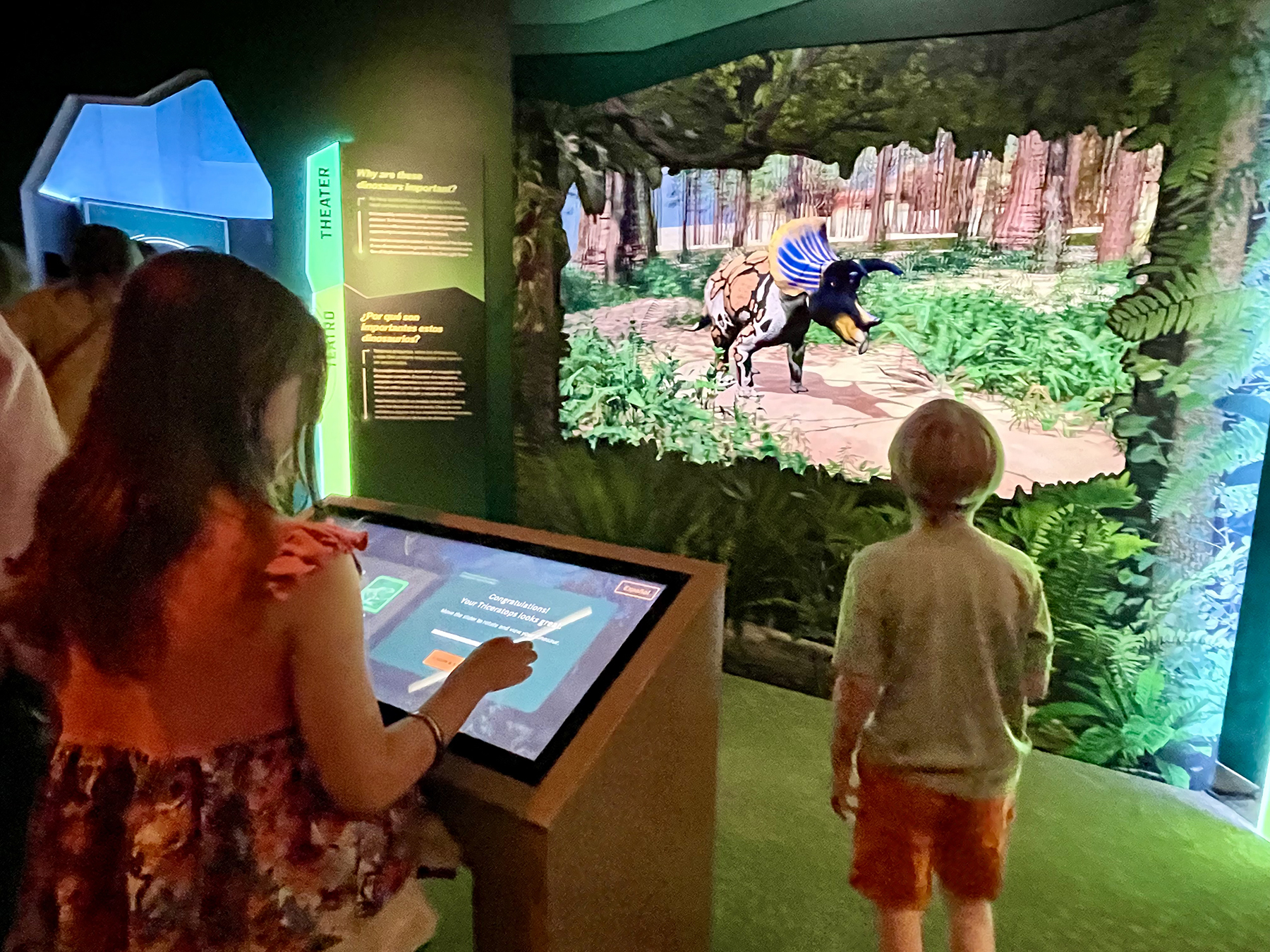Ideum recently completed a family of three exhibits for North Carolina Museum of Natural Science’s new Dueling Dinosaurs exhibition. Each exhibit leveraged 3D models for different interpretive purposes, collectively showcasing a contemporary snapshot of the possibilities of 3D digitization presented in exhibitions.
In the “Fossil Block Theater'' experience, visitors are immersed by a physical reproduction of the Dueling Dinosaurs fossil pair. As a narrator describes how the museum's paleontologists use evidence-based methods to better understand the fossils, mapped projections dance across the surface of the reproduced fossil. The projection draws attention to the details that reveal specific evidence as enveloping animations recreate potential events that could have caused the dinosaurs to have been buried together. The actual fossil, under rigorous study in an adjacent viewing gallery, is now in pieces. Ideum processed NCMNS’s original, intact 3D scan of the Dueling Dinosaurs fossil and reproduced it using CNC technology. The 3D model was scaled to fit the room and was split into four separate panels to be milled on the CNC by Ideum’s Fabrication team. After milling, the foam was seamed, sanded, hard-coated, and scenically painted to ensure scientific accuracy and vivid projection. 3D Paleoartists, Urvogel, well known for their Saurian dinosaur simulation game, animated scenes of dinosaur movements and interactions, as well as provided surface “skins” to line up over the fossil skeleton reproductions, helping to introduce and flesh out the fossil pair’s storyline.
As fossil evidence aids paleo artists in understanding the appearance of dinosaurs, Ideum designed and built a digital interactive where visitors can combine creative and critical thinking skills to envision the appearance of the Triceratops from Dueling Dinosaurs. By studying the morphology of animals today whose evolved appearance can help attract mates, disguise, or protect them, visitors use the same methods that paleontologists use to create their own visual rendering of a dinosaur. Visitors can save or share their creations on social media by accessing a QR code generated just for them. This interactive leverages a dynamically skinned and animated 3D model of the Triceratops stomping around a sandy Cretaceous river, with more than a thousand potential permutations in this “Appearance Interactive” exhibit.
Paleontologists use scanning technologies on fossils to see things that the naked eye cannot and to study fossils without damaging them. The “CT Scanning Interactive'' set within the lab area of the Dueling Dinosaurs exhibition, blends the digital and physical to create a compelling, hands-on way to learn how paleontologists use technologies to learn about ancient creatures. Visitors initiate a simulated CT scan of a fossilized Thescelosaurus skull displayed inside an exhibit case. As the laser simulates a scan, the 3D skull begins to appear, bit by bit, to fill a 32” Looking Glass Holographic display in the back of the case. Visitors simultaneously see a digital model forming on an accessible touch screen in front of them. Equipped with the 3D model, visitors use rotate, pinch and zoom gestures to explore it like paleontologists do. A set of controls allow visitors to adjust transparency, color grouped bones, and separation of the skull pieces in order to see inside the hologram. Visitors are tasked to identify the Thescelosaurus’s inner ear and then are prompted to compare it to a barn owl, alligator, or bobcat’s inner ear so they can better understand how the dinosaur may have heard its ancient world. Visitors can then compare the ancient animal’s aural experience to a human’s hearing range.
The three multimedia experiences developed by Ideum for the Dueling Dinosaurs exhibition present paleontology as an intriguing mystery for visitors to explore through the lens of research at the North Carolina Museum of Natural Sciences. 3D models were used for accurately replicating a physical specimen, for animating envisioned paleo-art creations, and for simulating scientific processes that can be manipulated for greater exploration. The result is a deeply digital paleo world in which the scientifically researched details of these creatures and their ancient existence are more alive and accessible than their static, fossilized remains would suggest on their own.


